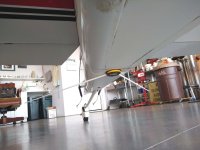Rick_Aronow
I'm New Here
Looking for recommendations on brand & model and mounting of vor/loc/gs antenna for a -7A. Van's has a couple of different Commant & Rami that they sell. What are the pro/cons of the various models? My preference is to do a traditional mount in the VS, but I'm not sure how they would mount. I've got my VS complete, except for the tip.
Also, since VOR & LOC operate in the same frequency range wouldn't any VOR antenna also be a LOC antenna? Some antennas are listed as VOR/GS while others are VOR/LOC/GS.
Also, since VOR & LOC operate in the same frequency range wouldn't any VOR antenna also be a LOC antenna? Some antennas are listed as VOR/GS while others are VOR/LOC/GS.











